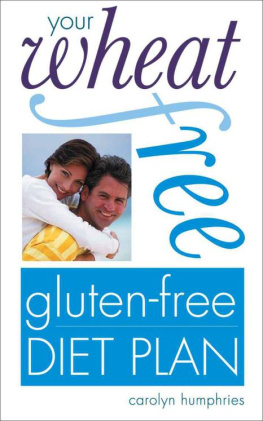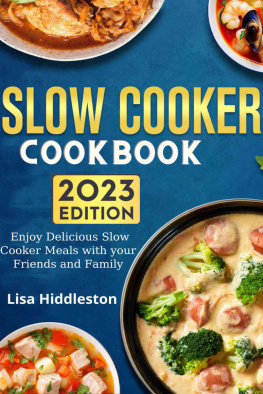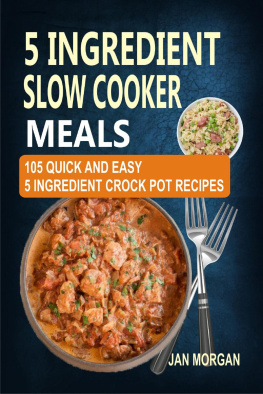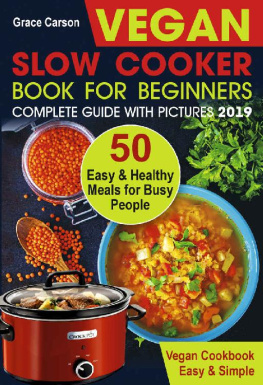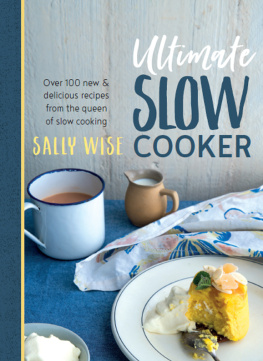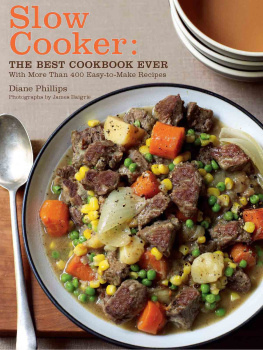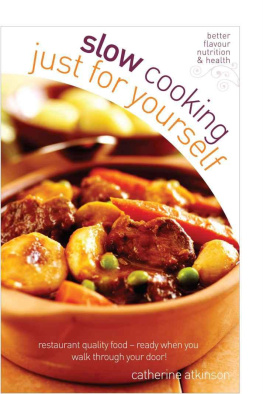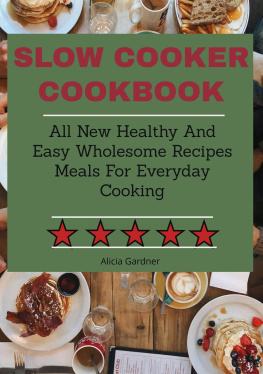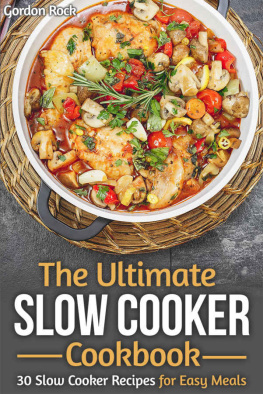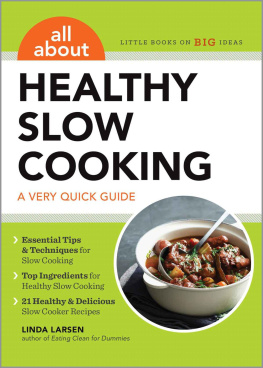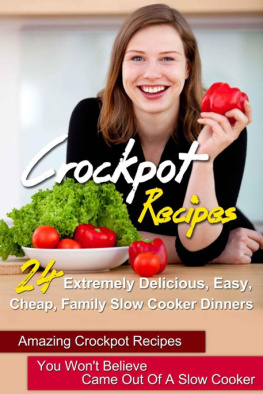
Table of Contents
Introduction
Just about every country in the world has delicious slow-cooked dishes that bring out the flavour of the food as well as rendering the ingredients meltingly tender. So what better way to enjoy your slow cooker than to create culinary masterpieces from all corners of the globe? Imagine coming in from work to the gorgeous aroma of a sweetly spiced chicken tagine or a glorious, hearty minestrone gently bubbling in the pot.
Today, because the world has become smaller and with ingredients easily imported and exported to and from every continent, fusion food is becoming the norm. Wherever you go, you will see touches of 'foreign' influences on what was once traditional fare. That is all to the good because it means the best from all cultures are blended, creating whole new taste sensations.
Here you will find my favourite slow-cooked dishes from many nations, some traditional, many with an exciting new twist, using readily available ingredients. You will also get an insight into the different cultures and ingredients of the various countries and regions so you can better understand the ethos of each area's food and become motivated to create your own specialities. Obviously you are going to use your slow cooker most to cook sumptuous soups, chowders, stews and casseroles, but you will also find it invaluable for making dishes you might not associate with a slow cooker, such as terrines, fondue, breads and spare ribs. Most of the recipes are for main courses, but I have included a few speciality desserts and even a tip for making a lovely creamy porridge, cooked overnight to be ready in time for breakfast.
The benefits of the slow cooker are obvious. For the most part, you can prepare the food for the pot, then leave it to cook without having to worry that it will dry out and spoil. Also, because the cooking is so gentle, you can cook on a Low, Medium or High setting, depending on how quickly (or, rather, slowly!) you want the meal ready. I've mostly cooked on Low so your supper can be cooking while you are at work - but you can check the chart later in the book to vary the heat and cooking times according to when you want to eat. Many dishes can be cooked as one-pot meals: others just require a simple accompaniment such as rice, pasta, couscous, potatoes or just crusty bread and a side salad (which is always suggested in the recipes). The slow cooker also uses far less fuel than a conventional cooker and doesn't fill the kitchen with steam, even in summer.
All the recipes are very easy to prepare using ingredients you should find in any supermarket, and the results are stunning. So embark on this exciting culinary journey right now and you can enjoy a taste of a different part of the world every day with your new-found cook's best friend.
Using Your Slow Cooker
- Stand the electric base on a level, heat-resistant surface. Do not use on the floor.
- Do not preheat your pot unless your manufacturer's instructions tell you to.
- Put the ingredients in the ceramic crock pot, then put the pot in the base.
- Add boiling liquid.
- Cover with the lid and select the cooking temperature (High, Medium or Low).
- Cook for the recommended time, checking after the shorter time if a range is given. This will usually be sufficient for most cookers but the food won't spoil if it is cooked for the extra time.
- Taste, stir and re-season, if necessary.
- Switch off the cooker and remove the crock pot using oven gloves.
Cooking Tips for Using the Slow Cooker
- Any of your usual soup, stew or casserole recipes can be cooked in your slow cooker but liquid doesn't evaporate as much as it does when cooking conventionally, so cut down the liquid content by 30-50 per cent (not quite so important for soups) or increase the flour or cornflour (cornstarch) thickener by one-third. You can always add a little extra liquid at the end of cooking, if necessary.
- Should there be too much liquid at the end of cooking, strain it into a saucepan and boil rapidly for several minutes until reduced to the quantity you require, or thicken it with a little flour or cornflour blended with a little water.
- If wanting a brown finish to meat or poultry, fry it quickly in a frying pan before adding to the crock pot.
- For many dishes, it is best to quickly fry onions before adding them - the flavour is completely different from slow cooking them from raw.
- Make sure all frozen foods are thawed before use.
- Cut root vegetables into small, even-sized pieces and put them towards the bottom of the pot as they will take longer than meat or other vegetables to cook.
- Do not cook too large a joint or bird in the crock pot. It should fit in the pot with at least a 2.5 cm/1 in headspace. If unsure, cut the joint or bird in half before cooking (it will then cook quicker, as when cooking conventionally).
- Dried beans must be boiled rapidly in a saucepan of water for at least 10 minutes before adding them to your crock pot, to destroy toxins.
- If preparing food the night before you wish to start cooking, store the ingredients in the fridge overnight. Put them in the crock pot in the morning and cover with boiling liquid or sauce before cooking.
- Do not open the lid unnecessarily during cooking as heat will be lost. If you remove it to add extra ingredients or to stir more than once or twice, you may need to add on an extra 10 minutes at the end (but in most cases there is sufficient cooking time built in to allow for this).
- When cooking soups, make sure there is a 5 cm/2 in headspace in the pot to allow for bubbling during cooking.
- When food is cooked, the cooker can be switched off and left for up to 30 minutes. The food will stay piping hot. If you need to leave food keeping hot for longer, switch to Low.
- If you are unsure if a joint of meat or a bird is cooked through, check by inserting a meat thermometer at the end of cooking.
- Most foods can be cooked on High or Low (or Medium if you have it). Fish and egg-based dishes (such as crme brle), however, must be cooked on Low.
- If you are planning on being out all day, opt for cooking on Low, then there is little or no chance of the meal ruining even if you are late (particularly if you don't have a programmable slow cooker).
- You can use the crock pot to keep hot drinks such as mulled wine warm, or for hot dips or fondues. Keep the pot on the Low setting.
- Use a crock pot suitable for the quantity of food you want to cook. It should be at least one-third full for best results (but for foods like ribs or chicken wings, a single layer is fine if you have a large pot). Don't use a small pot and pack it all in tightly up to the top or the heat won't be able to penetrate the food - just as when cooking conventionally.
Looking After Your Slow Cooker
- Do not put the crock pot or the lid in the oven, freezer or microwave, or on the hob, or under the grill (broiler).
- Do not plunge the hot pot into cold water after cooking or it may crack.
- Do not leave the whole pot soaking in water as the base is unglazed and porous so will absorb the water. You may, however, leave water in the pot to soak it before washing.
- Do not preheat the cooker before adding the ingredients (unless your manufacturer's instructions tell you to).
- Do not use the slow cooker to reheat food.
- Do not leave uncooked food in the slow cooker when it is not switched on (so never put it in there overnight ready to switch on in the morning. Store the ingredients in the fridge).
Next page
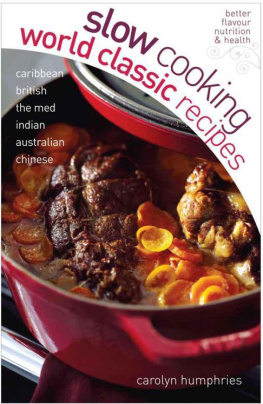
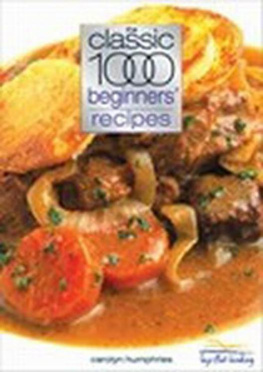
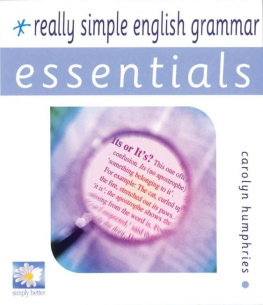
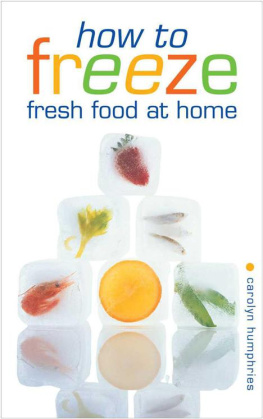
![Humphries - The low carb long term lifestyle : [with a twist of Mediterranean to add zest to your eating]](/uploads/posts/book/104760/thumbs/humphries-the-low-carb-long-term-lifestyle.jpg)
